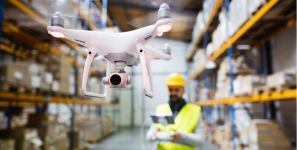Report: Ecommerce is Transforming B2B
DHL Express has released a white paper with Cranfield School of Management investigating the current trends and significant potential of the international business-to-business ecommerce landscape.
The paper provides a practical guide to specific digital features and strategies used by businesses that are developing a cross-border ecommerce offering and presents a framework for companies to better understand and benchmark their own level of ecommerce development.
“We have seen B2C ecommerce grow at a faster pace than most other industry sectors in recent years, with premium crossborder shipments growing from 10 percent to more than 20 percent of the volumes of DHL Express,” said Ken Allen, CEO of DHL Express. “As this study shows, there is the same potential for crossborder B2B ecommerce to grow at a dynamic pace, and the DHL Express network will be an enabler of that for businesses around the world.”
“Ecommerce is radically transforming the way in which B2B companies operate and opening up new market opportunities around the globe while simultaneously challenging many established companies to keep up with more agile newcomers,” said John Pearson, CEO of DHL Express Europe. “The most successful ecommerce companies today provide an enhanced customer experience comparable to what we all now know from our personal online shopping activities.
“To compete in this changing market environment, B2B companies are also having to change their supply chains, becoming more transparent, streamlined, responsive and flexible,” Pearson added. “Based on both our longstanding relationships with the B2B sector and our success in serving crossborder B2C, DHL Express is very well placed to help industrial companies expand more actively into ecommerce.”
Crossborder B2B transactions are expected to reach $1.2 trillion within the next five years, according to Forrester Research. To take advantage of this potential, companies need to provide a more flexible, scalable and mobile customer experience in line with business-to-consumer (B2C) online shopping. However, B2B transactions differ from B2C in fundamental ways that necessitate a different approach. Adapting certain website features and functionalities, such as product catalogs and live customer support, and better integrating front and backend systems and end-to-end logistics processes are crucial for B2B companies seeking to provide this customer experience.
“In the course of our research, we identified three archetypes of companies that are involved in ecommerce, from ‘novice’ to ‘intermediate’ to true ‘innovators,’” said Professor Michael Bourlakis, Chair in Logistics & Supply Chain Management at Cranfield University. “Novices, for example, have just begun to dip their toes in the water when it comes to ecommerce and have basic functionality on their websites. Innovators, on the other hand, have sophisticated offerings and employ advanced technologies – such as machine learning and virtual reality – to better anticipate customer requirements and offer personalized experiences. With this framework, businesses can see how they compare to other companies that are developing an ecommerce offering and gain insights into improving their own ecommerce efforts.”
For companies looking to build flexibility into their networks and to take advantage of the overseas demand that arises – sometimes unexpectedly – with the launch of an ecommerce offering, international express logistics companies can provide global networks that make door-to-door access to overseas markets and a premium service offering possible. This allows B2B companies to win business from new customer segments in an efficient manner, without the need for extensive warehousing and distribution networks in markets with low volume. They also provide indirect benefits to ecommerce companies by providing additional brand credibility and trust, streamlining their logistics processes, and minimizing financial risks by reducing the time spent by inventory in transit and ensuring full visibility on orders.
Based on a combination of desk research and in-depth interviews, the white paper identifies five categories of features that are essential to B2B ecommerce platforms: digital infrastructure, customer experience, customer personalization, seamless integration and synchronization of logistics. It also offers practical recommendations to companies that wish to further develop their capabilities across these five categories, such as using business intelligence tools to capture better data and enhance customer insights and looking at the supply chains of major retailers for inspiration when developing omnichannel sales networks—combining brick and mortar and web or mobile shops.





Leave a Reply